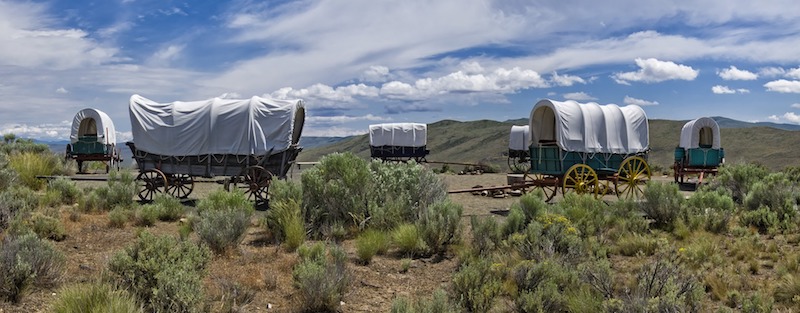One of the biggest challenges when trying to create great content is doing it consistently. This is true whether you are writing blog posts for your own website or creating social media posts to attract new customers.
The truth is, unless content creation is your main job, it’s easy to let other tasks get in the way. That means your initial goal of writing a new article each day or posting a fresh video on Instagram or Snapchat several times a day can easily slip to once a week … and then to once every couple weeks … and eventually … to whenever you get around to it.
It doesn’t have to be this way. You can create great content consistently. The secret (and it’s really no secret) is to have a plan. Not just any old plan, but one that will help you set reasonable goals for content creation and stick to them.
Here is a 5-step plan to help you keep the content flowing.
1. Capture all your ideas, great and small
All great content starts with an idea. While you could rely on your memory when you sit down — or stand up — to create content, if you are trying to create content consistently, why chance it?
Keep a list of content ideas that you can pull from when it’s content creation time. Your system should allow you to easily capture your ideas while on the go, without misplacing them.
I use Trello as my content idea bank, because I can set up separate lists for different categories — such as mindfulness yoga or science writing tips. If I’m at my computer when I have an idea, I can add it directly to Trello.
If I’m away from my computer, I sometimes email the idea to myself, or jot it down in the notes app on my phone. Or I may write the idea on a scrap of paper (yes, people still use paper).
Not every idea that you write down will be a winner. Some will actually turn out to be pretty bad, especially when you look at them later with fresh eyes. That doesn’t mean you shouldn’t write them down.
Ideas occur to you because something about the idea excited you … at least at the time. When you return to the idea, it might have lost some of its luster, but if you sit with the idea for a little while, you might be able to find that original spark.
2. Choose a goal that helps you create content consistently
Once you have an idea bank to capture your brilliant insights, you will no doubt be itching to start creating content. Two things often happen at this stage:
- You look at all the great ideas that you have and start creating content every day or multiple times a day. After a couple weeks of this, you realize that you are neglecting other work that needs to happen, so you take a short break from content creation. This break soon becomes a vacation and eventually you are no longer creating content.
- You are astounded by your amazing ideas and think, “Why wait to share my brilliance with the world?” So you embark on a content creation marathon, working day after day until your idea bank is picked clean. And because you were so excited about your newly created content, you posted it all right away rather than spreading it out. But then you wake up one day and find that you have nothing left to share.
I’ve done both of these. Maybe you have too, or maybe you’ve had your own erratic content creation journey.
Sometimes content creation can feel like a marathon (or even a sprint), but I like to imagine it as a long backpacking trip — slow and steady. If walking for miles with a heavy pack on your back isn’t your thing, you could imagine content creation as like the classic video game The Oregon Trail, where you have to get across the United States in a covered wagon.
In order to survive this kind of long-term journey, you have to do two things:
- Decide what goal you can reasonably tackle right now.
- Choose a pace that will get you there and that you can maintain.
For now, I’ll set the backpacking and wagon train metaphors aside and focus on content creation.
When setting your content creation goal, ask yourself these questions:
- What do you hope to accomplish with content creation? Is it attracting new customers? Showing that you are an expert in your field? Helping people improve their business, relationships, or life?
- How much content do you need to create in order to make that happen? Think about not just volume of content, but also frequency and type of content.
- And the most important question: Given all that you have going on in your business and your life (yes, your personal life should be a factor in these decisions), how much content could you reasonably — and consistently — create right now?
You might find that by the time you get to the third question, you will need to refine your answers to the first two questions. If you are short on time (and who isn’t?), you might need to set a smaller goal. Again, what we’re going for here is consistent content creation.
That doesn’t mean you shouldn’t push yourself to create more content, just that you shouldn’t attempt to take on so much that you can’t keep going.

3. Set a content creation pace that works for you
Once you’ve chosen a goal that is slightly challenging, but not too challenging, set a pace that will enable you to reach that goal. Here are two possible options:
- Block off the same amount of time each day for content creation, ideally at the same time of day so it becomes a habit.
- Block off a larger chunk of time once or twice a week, during which you can really dive into content creation; again, ideally at the same time each week.
Time blocking is a scheduling tool that helps you focus on your most important work. Gary Keller and Jay Papasan explain this concept in their book The ONE Thing: The Surprisingly Simple Truth Behind Extraordinary Results. It basically looks like this:
- Choose a chunk of time to block off on your calendar.
- Block off that time.
- Protect your blocked time at all costs.
The first two steps are pretty straightforward. Once you know what you want to do (in this case, content creation) and how long you need to spend on it to reach your goal, you identify time on your calendar when you can do that task.
The hard part is keeping your blocked time from being overrun by other activities and interruptions (which includes coworkers, family members, and random strangers who show up at your office).
If you let other things get in the way of your content creation, you will never reach your goal. So you either have to hold onto your time blocks or scale back your goal. Doing less is always a valid option, but it should be done proactively, not reactively.
4. Use an editorial calendar to create content consistently
You may not be publishing a magazine or running a health news website, but you could benefit from one of the tools that large print and online publications use to create content consistently — the editorial calendar.
An editorial calendar is a visual workflow tool used to keep track of content as it moves through the many steps of the content creation process, from idea generation to the initial draft to editing and sharing the content.
This tool can also help you plan your content. Because an editorial calendar is a visual tool, you can easily see where each piece of content is in the creation/sharing process, and also on which days the content will go live. This helps you make sure that you are creating content consistently.
I use Trello as my editorial calendar. Because I do all of the writing, editing, and publishing for content on my website, my editorial calendar is a lot simpler than one used by a larger publication.
However, I also write for several publications, so I am plugged into their editorial calendars. In both cases, it is really easy to see what stage the content is in. And in the case of the publications that I write for, who is assigned to that stage.
I won’t go into too much detail about how to set up an editorial calendar. Hubspot has a good overview of different types of editorial calendars. If you want to keep your content flowing, though, I would recommend using some version of an editorial calendar.
5. Review your content creation process regularly
It has taken me years to create content consistently … and I still struggle with it sometimes (I’m writing this on Saturday instead of on my usual content creation day, because I had to write a last-minute story for a publication on that day).
However, because I have an editorial calendar, I can see exactly what content I have created, which content I need to create, and which content is behind schedule. I am even at the point where I am a few weeks ahead in my content creation (this buffer is a lifesaver for those weeks when nothing goes according to plan).
I also check in each week with my content creation process (and everything else that I have going on … my own business, projects for clients and publications, and personal stuff). I do this at the end of each week — and yes, I block off time to do this weekly review.
You can check in with your content creation process however you like. The key thing is to do it regularly. During this check-in, ask yourself these questions:
- Are you on track with your content creation? Will you meet your goals?
- Has anything interrupted your content creation time blocks? If so, what can you do to prevent those distractions from happening next week?
- Do you need to scale back your goal?
- Is your goal still the right goal (for your business, you work, etc.)?
By taking time each week to review how well your content creation is going, you can adjust your plan to help you keep going. In the beginning, it is common to try to do too much, so these check-ins are a good way to catch small problems before they grow too large.
Also, there’s no shame in slowing things down a little. I find that it’s better to create less content consistently than it is to have the occasional spurt of content creation. I also think that creating content regularly makes it easier to do, because you develop a habit of content creation that keeps you going when your energy sags.
Eventually, your content creation process is like having a covered wagon that rolls along the Oregon Trail all by itself. You’re just there to enjoy the ride.


